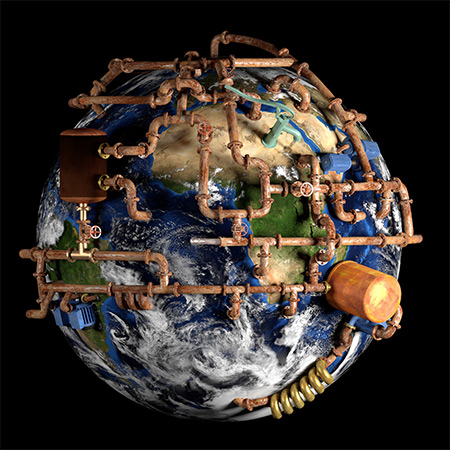New Model Needed for Oil, Gas Data Communications
Implementing a Distributed Communications Architecture
A company could implement a Distributed Communications Architecture in many ways, but Paine and Treat point to the OPC Unified Architecture (UA) standard, a multi-purpose set of services that a data collector – or OPC server – provides to application that is ready to consume information.
OPC UA is the interoperability standard for the secure and reliable exchange of data in the industrial automation space and in other industries. According to the OPC Foundation, which oversees development and maintenance of the standard, OPC is a series of specifications developed by industry vendors, end-users and software developers, which define the interface between clients and servers, as well as servers and servers, including real-time data access, monitoring of alarms and events, access to historical data and other applications.
When it was first released in 1996, the standard was intended to abstract programmable logic controller (PLC) specific protocols into a standardized interface, allowing human machine interface/supervisory control and data acquisition (HMI/SCADA) systems to interface with a “middle-man” who would convert generic-OPC read/write requests into device specific requests and vice versa, according to the OPC Foundation.
OPC UA specifications have been developed to address the challenges of security and data modelling that have accompanied the introduction of service-oriented architectures in manufacturing systems.
“With all these automation companies like Siemens and General Electric having native protocols with all of the different SCADA and HMI applications, you can’t write all these different protocol drivers to communicate with different types of devices,” said Steve Sponseller, product manager for business development with Kepware, in an interview with Rigzone. “Why not come out with a standard so applications on top only have to support the OPC standard?”
Kepware is seeking to address this issue with its KEPServerEX, which can be connected to several types of devices on a rig or wellsite through the driver layer. Using different drivers, Kepware pulls data from data bases, other OPC servers, from some HMI systems, and other sources through Kepware’s custom driver. Data is then passed on to connected clients from a rig or piece of equipment into a corporate historian, which might be centrally located at an office. Data is then available for playback when bandwidth is available. When bandwidth is not available due to weather, obstructions, other data going across, data continues to be collected locally and resumes playback to the historian once communications become available again.

123456
View Full Article
WHAT DO YOU THINK?
Generated by readers, the comments included herein do not reflect the views and opinions of Rigzone. All comments are subject to editorial review. Off-topic, inappropriate or insulting comments will be removed.
- How Likely Is an All-Out War in the Middle East Involving the USA?
- Rooftop Solar Now 4th Largest Source of Electricity in Australia
- US Confirms Reimposition of Oil Sanctions against Venezuela
- EU, Industry Players Ink Charter to Meet Solar Energy Targets
- Analyst Says USA Influence on Middle East Seems to be Fading
- Russian Ships to Remain Banned from US Ports
- Brazil Court Reinstates Petrobras Chair to Divided Board
- EIB Lends $425.7 Million for Thuringia's Grid Upgrades
- Var Energi Confirms Oil Discovery in Ringhorne
- Seatrium, Shell Strengthen Floating Production Systems Collaboration
- An Already Bad Situation in the Red Sea Just Got Worse
- What's Next for Oil? Analysts Weigh In After Iran's Attack
- USA Regional Banks Dramatically Step Up Loans to Oil and Gas
- EIA Raises WTI Oil Price Forecasts
- How Likely Is an All-Out War in the Middle East Involving the USA?
- Venezuela Authorities Arrest Two Senior Energy Officials
- Namibia Expects FID on Potential Major Oil Discovery by Yearend
- Oil Markets Were Already Positioned for Iran Attack
- Is The Iran Nuclear Deal Revival Project Dead?
- Petrobras Chairman Suspended
- Oil and Gas Executives Predict WTI Oil Price
- An Already Bad Situation in the Red Sea Just Got Worse
- New China Climate Chief Says Fossil Fuels Must Keep a Role
- Oil and Gas Execs Reveal Where They See Henry Hub Price Heading
- Equinor Makes Discovery in North Sea
- Macquarie Strategists Warn of Large Oil Price Correction
- DOI Announces Proposal for Second GOM Offshore Wind Auction
- Standard Chartered Reiterates $94 Brent Call
- Chevron, Hess Confident Embattled Merger Will Close Mid-2024
- Analysts Flag 'Remarkable Feature' of 2024 Oil Price Rally


